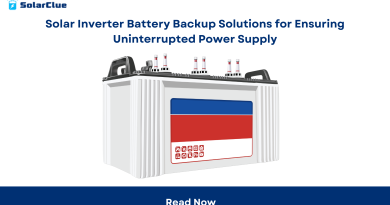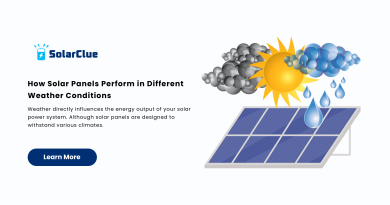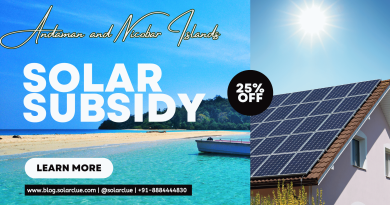The Ultimate Guide to Choosing the Right On-Grid Solar Inverter for Your Home
Have you ever thought to make use of the power of the sun to generate electricity for your home? Investing in a solar energy system can be a game-changer, not only for the environment but also for your monthly utility bills. However, choosing the right On-grid solar inverter can be a complex task, especially if you’re new to the world of solar energy. Don’t worry, though – we’re here to guide you through the process and help you make an informed decision.
Table of Contents
What is an On-Grid Solar Inverter ?
An on-grid solar inverter plays a vital role in a solar energy system by converting the direct current (DC) from your solar panels into alternating current (AC), which powers your home’s appliances. It connects to the local utility grid, enabling you to send any extra energy generated by your solar panels back into the grid. This could result in earning credits or compensation from your utility company.
Types of On-Grid Solar Inverters:
Following are the types of On- Grid Solar Inverter.
1.String Inverters : In String Inverter only one Inverter for all Solar panels. Solar panels connected with strings. Multiple such string are further connected with inverter. Due to Solar panel connected to each other, they generate power, & have to reach the power inverter through String. the power generated is in Dc form, So the inverter converts Dc into Ac & supplies it to house. It also called as Central Inverter. All the Solar panels connected to the string should be Same size.& All the panels should be fixed at the same angle. Only then efficiently the power will pass through the string to go to the inverter.
2.Micro Inverters : Unlike string inverters, micro-inverters are installed on each individual solar panel, allowing for greater efficiency and flexibility in shading conditions. In these there are separate Inverters for all the panels. Here the power of all solar panels are not connected to each other .You can fix this system in any Angle. There is no condition here regarding Angle & Size. It is easy to expand.
3.Power Optimizer : it is an upgrade version of micro inverter. Power optimizer divided the inverter into two simple thing, One is Inverter, second is optimizer. There will be one inverter connected to all solar panels.& optimizer will be installed below Each panels. the optimizer detects the maximum energy point of the solar panels & optimizes it, and send it to the inverter through the strings. These panels performs individually. optimizer reduces its voltage, when ever there is power cut.
Uses of On-Grid Solar Inverters:
On-grid solar inverters primarily power residential and commercial solar energy systems connected to the local utility grid. They allow you to take advantage of net metering, which means you can sell any excess energy generated by your solar panels back to the utility company, effectively lowering your electricity bills.
Benefits of an On-Grid Solar Inverter:
1.Reduced Energy Costs: By generating your own electricity with solar panels and an on-grid inverter, you can significantly reduce your monthly energy costs.
2.Environmental Sustainability: Solar energy is a clean and renewable source of power, helping to reduce your carbon footprint and contribute to a greener future.
3.Potential for Energy Credits: Many utility companies offer incentives or credits for households that feed excess solar energy back into the grid.
4.Increased Property Value: Installing a solar energy system with an on-grid inverter can potentially increase the value of your home.
Conclusion:
Choosing the right on-grid solar inverter is a crucial step in setting up an efficient and cost-effective solar energy system for your home. By considering factors such as the size of your system, shading conditions, and your energy needs, you can select an inverter that maximizes the benefits of solar power. With the right on-grid solar inverter, you’ll be on your way to enjoying clean, renewable energy and potentially saving money on your electricity bills for years to come.
Visit SolarClue® to see the Best On-Grid Solar Inverter. SolarClue® actively sells solar energy products at discounts of up to 50% on its online marketplace.
Frequently Asked Questions :
1.Can we use inverter with on-grid solar system?
Yes. There are two ways to use solar without batteries: Grid-Tied. This is connecting your solar panels directly to the electricity grid using a DC-to-AC “grid-tied” inverter.
2.Can we run AC on solar inverter?
Yes, you can run an air conditioner with solar power.
3.Which type of inverter do we use for an on-grid solar system?
String inverters connect a set of panels—a string—to one inverter. That inverter converts the power produced by the entire string to AC. Although cost-effective, this setup results in reduced power production on the string if any individual panel experiences issues, such as shading.
4.How to work on a grid solar inverter?
A solar inverter works by taking in the variable direct current, or ‘DC’ output, from your solar panels and transforming it into alternating 120V/240V current, or ‘AC’ output.
5.Can on-grid inverter work without grid?
No. Grid tied inverter require a voltage/frequency reference which is provided by the Grid.




